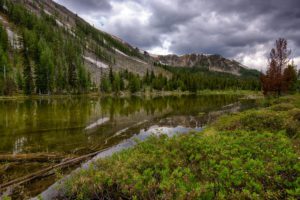For immediate release
March 12, 2018
For More Information:
Greg Dyson, WildEarth Guardians, 503-730-9242, gdyson@wildearthguardians.org
Melissa Cain, Western Watersheds Project, 208-392-2886, melissa@westernwatersheds.org
New Mexico Bighorns to be Killed to “Save Them” from Livestock Diseases Spread by Public Lands Grazing Operations
TAOS, New Mexico. – The New Mexico Department of Game and Fish has authorized hunters to kill nearly 50 bighorn sheep in the Rio Grande Gorge, near Taos, in a misguided and backward effort to prevent the wild animals from catching deadly diseases from domestic livestock. The hunt is intended to reduce the likelihood of bighorn sheep contact with disease-carrying domestic livestock by reducing bighorn sheep herd numbers in the Taos gorge, rather than removing the public lands livestock that put native wildlife at risk. Under the state’s plan the bighorn killing will continue through late March.
The Bureau of Land Management (BLM) authorizes domestic sheep grazing at the northern end of the Rio Grande Gorge.. Bighorn sheep have approached these grazing allotments several times since 2016, with at least one ram killed north of the New Mexico/Colorado border by Colorado Parks and Wildlife to prevent his return to the main herd. Bighorn sheep from the herd have been killed for approaching domestic sheep on private lands as well, as wildlife managers have sought to prevent the transmission of sheep pathogens to the herd by eliminating bighorns who may have come into contact with domestic livestock.
“If the domestic sheep remain in such close proximity to wild bighorn habitat, so will the risk of a pneumonia-related die-off in the bighorn herd,” said Melissa Cain, the Bighorn Habitat Campaign Coordinator for Western Watersheds Project. “The Bureau of Land Management should instead address these risks by removing domestic sheep from bighorn sheep habitat.”
Bighorn sheep are susceptible to pneumonia-inducing pathogens carried by domestic sheep and goats. Following contact with a single sheep or goat, up to 90% of a bighorn herd may be killed by pneumonia. After an initial die-off, some bighorn sheep may recover and appear healthy, however the pneumonia pathogens are not fully cleared from their systems. Lambs born to surviving ewes in the years following an outbreak often develop pneumonia shortly after weaning, and usually die before reaching adulthood. Pneumonia related to livestock pathogens is believed to have contributed to the widespread decline of bighorn sheep during the era of westward expansion, when bighorn populations plummeted by more than 95%.
“It sounds crazy when you say it out loud: We’re killing bighorns to save them,” said Greg Dyson of WildEarth Guardians. “Instead, we should be looking the root of the problem: people who raise livestock on our public lands for their own personal gain. The Rio Grande Gorge herd is iconic, and people travel from far and wide to view it. Now we’re killing over 10% of this herd so a few people can continue to profit by raising livestock on lands that belong to us all. We’ve really got to get our priorities better aligned with the natural world.”
Bighorn sheep are native to the Taos area, but were wiped out in the last century as a result of disease and overhunting. The Rio Grande Gorge herd was reestablished in 2006, when 23 bighorn sheep were transplanted to the canyon from Wheeler Peak. Another transplant followed in 2007, when an additional 25 bighorn sheep were released in the area. Since 2007, no other transplants have occurred and the herd has grown to an estimated 350 bighorn sheep in 2017.While the New Mexico Department of Game and Fish have estimated that the Rio Grande Gorge is capable of supporting a population of 1,000 bighorn sheep, the agency intends to manage the population at approximately 250 bighorn sheep. To achieve this goal, the agency has enlisted hunters to kill up to 48 ewes in 2018.
“The bighorn herds are far more appropriate in the Gorge than the domestic sheep operations,” said Cain. “It’s time that management catches up with the science and the cultural values of the 21st century.”
###






